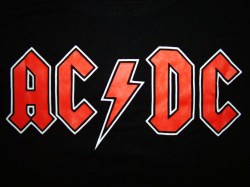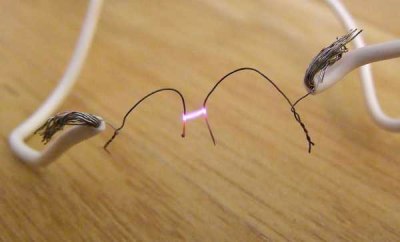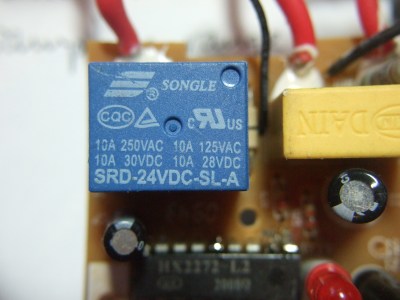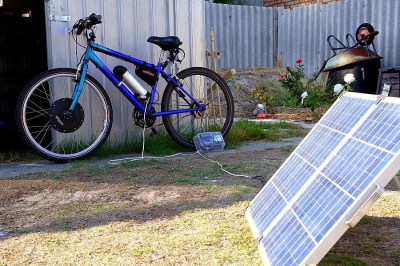Sdge 24v Trasformer Blows Again on the High Voltage Side Sdge Surges
The war of the currents was fairly decisively won by AC. Later all, whether you've got 110 V or 230 V coming out of your wall sockets, fifty Hz or 60 Hz, the whole world agrees that the frequency of oscillation should be strictly greater than zero. Technically, AC won out because of three intertwined facts. Information technology was more economical to accept a few big power plants rather than hundreds of thousands of tiny ones. This meant that power had to exist transmitted over relatively long distances, which calls for college voltages. And at the fourth dimension, the Ac transformer was the but way viable to step upward and down voltages.

But that was then. We're right now on the cusp of a power-generation revolution, at least if you believe the solar free energy aficionados. And this means two things: local power that's originally generated as DC. And that completely undoes two of the 3 factors in AC's favor. (And efficient DC-DC converters kill the transformer.) No, we don't think that there'due south going to be a switch overnight, simply nosotros wouldn't be surprised if it became more and more common to take ii home electrical systems — one remote high-voltage AC provided by the utilities, and ane locally generated depression-voltage DC.
Why? Considering about devices these days utilize depression-voltage DC, with the notable exception of some big appliances. Batteries store DC. If more than and more homes have some local DC generation capability, it stops making sense to catechumen the local DC to AC just to plug in a wall wart and convert it back to DC once more. Hackaday'south [Jenny List] sidestepped a lot of this setup and went directly for the punchline in her article "Where's my depression-voltage DC wall socket?" and proposed a few solutions for the physical interconnects. But we'd like to back it up for a minute. When the low-voltage DC revolution comes, what voltage is it going to exist?
Resistive Heating
The trouble with lower-voltage wiring is elementary physics. For a given ability demand, P=I*V, so a lower voltage means pushing more than current. But substituting in Ohm'due south Constabulary, more current likewise ways dramatically higher resistive losses P=I^2*R in the wires. Reducing the resistance of the wire by using more copper is ane alternative, but you go more bang for the cadet past focusing on the current-squared term.
 That'southward the reason that, for instance, power over Ethernet (PoE) schemes use around 48 5 to transmit something similar 30 W of ability — those thin Ethernet cables tin can only acquit then much current without wasting most of information technology away as rut. Even around l V, PoE schemes count on a loss of three to five watts in the cabling. So whatever cabling is used for the low-voltage DC segments of your dwelling house's electric system, it'due south going to exist thicker than True cat-5.
That'southward the reason that, for instance, power over Ethernet (PoE) schemes use around 48 5 to transmit something similar 30 W of ability — those thin Ethernet cables tin can only acquit then much current without wasting most of information technology away as rut. Even around l V, PoE schemes count on a loss of three to five watts in the cabling. So whatever cabling is used for the low-voltage DC segments of your dwelling house's electric system, it'due south going to exist thicker than True cat-5.
But copper costs money, so there's always going to exist some upward pressure on the voltage exerted past resistive heating furnishings.
Safe
 Electricity starts getting dangerous to humans somewhere around thirty-l V. That'due south where the current levels that push button through the human being body resistance start to become troublesome. But while anybody says "safety first!" information technology'southward also worth noting that you lot've got 110 or 230 V Ac in your walls correct now. Clearly it's "washing machine first" in the real world. Which is to say that although sub-30 Five DC would be safer, we suspect that the safety will exist designed into the connectors, or into circuit breakers.
Electricity starts getting dangerous to humans somewhere around thirty-l V. That'due south where the current levels that push button through the human being body resistance start to become troublesome. But while anybody says "safety first!" information technology'southward also worth noting that you lot've got 110 or 230 V Ac in your walls correct now. Clearly it's "washing machine first" in the real world. Which is to say that although sub-30 Five DC would be safer, we suspect that the safety will exist designed into the connectors, or into circuit breakers.
Switches and Relays
Which brings united states to the last concern. Have you ever arc welded? How much DC voltage does information technology have to strike up an arc? Something in the neighborhood of 24 V is a pretty mutual value for a professional unit, only people accept been able to weld with 20 V tool battery packs or even 12 Five car batteries. Some spot welder designs that we've seen only utilize ii or 3 volts, simply they develop the required current by pressing the workpieces together very difficult to brand the depression-resistance path.
 Have you lot ever looked on a relay and noticed that it has ratings for DC and AC apply? For instance, these relays are rated for 10 A at 250 V Air conditioning, but only 10 A at xxx V DC. Where does this gene of ten come from? Relay contacts can spark as the two contacts get close together, and they are decumbent to weld themselves together at higher DC voltages in a way that'due south merely not the case for AC, because AC arcs self-extinguish 100 or 120 times per second.
Have you lot ever looked on a relay and noticed that it has ratings for DC and AC apply? For instance, these relays are rated for 10 A at 250 V Air conditioning, but only 10 A at xxx V DC. Where does this gene of ten come from? Relay contacts can spark as the two contacts get close together, and they are decumbent to weld themselves together at higher DC voltages in a way that'due south merely not the case for AC, because AC arcs self-extinguish 100 or 120 times per second.
Making mechanical switches that work for your DC abode electric organization is going to be a problem, then, and that's going to put downwards force per unit area on the voltage. The boilerplate auto contains a lot of relays, and they seem to office nigh of the fourth dimension, so maybe 12 V is a good option here. Don't take my word for it, though. Here is an automotive engineer's accept on DC in the dwelling. It's a little chip dated, but he complains about the extra blueprint concerns in working on a 24 V diesel vehicle. We take that as a vote for lower voltages.
The X factor hither is progress in MOSFET or IGBT manufacture. Solid state DC circuit breakers aren't as inexpensive as mechanical (Ac) breakers even so, simply at voltages similar we're considering inside the home, they're getting there. The higher toll may besides simply reflect nowadays lower need. Maybe the downward voltage pressure will evaporate in the near futurity?
W.A.G. Fourth dimension
Now we've come up to the end of the commodity, so let's meet if nosotros can make any sense of all this. If solar is going to play a part in our future free energy demands, it's inefficient to round-trip from DC to Air conditioning and back once more. It'll be more than efficient to stay DC from the panel to the battery to the terminate device, maybe simply irresolute voltages once or twice with highly efficient DC-DC converters along the way.
 If there were to exist a complementary DC standard, heating losses button the voltage level up, switching constraints push the voltage down, and rubber is, nosotros remember, a wash. Solar panels are essentially costlessly configurable for either high voltage or loftier electric current, and nosotros think it'south telling that newer installations tend to run in the 24-50 V range. That says a lot most the importance of heating losses. Batteries are similarly flexible, so there's not much trouble matching them to the source.
If there were to exist a complementary DC standard, heating losses button the voltage level up, switching constraints push the voltage down, and rubber is, nosotros remember, a wash. Solar panels are essentially costlessly configurable for either high voltage or loftier electric current, and nosotros think it'south telling that newer installations tend to run in the 24-50 V range. That says a lot most the importance of heating losses. Batteries are similarly flexible, so there's not much trouble matching them to the source.
Nosotros'd be stoked to have DC sockets, and devices that plug into them, all powered past a medium-sized console on our roof and stored in medium-sized batteries in our basement. Whether this goes from the console to the battery to the plug at 48 V or 12 V is going to depend on the relative prices of copper and hefty FETs, only we're betting that FETs get cheaper and copper more than expensive. Nosotros'd personally like to run into this relatively high voltage stepped down at the plug for safety, say to 12 V, but nosotros won't quibble. It would make the perfect complement to our existing Air-conditioning infrastructure.
What do you lot say? What factors are we missing? Any of you have a DC side of your home already? What voltage(s) for DC?
Source: https://hackaday.com/2017/03/06/what-voltage-for-the-all-dc-house/
0 Response to "Sdge 24v Trasformer Blows Again on the High Voltage Side Sdge Surges"
Post a Comment